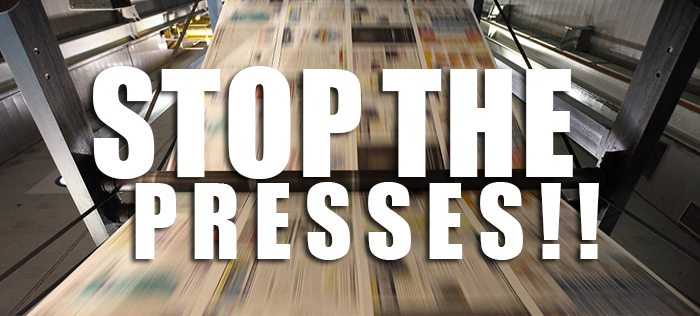Our company was established in 1999, at which time we mainly did media relations work. That played on Dan’s background as a journalist, and specifically his understanding of what made for a good news story.
He would always tell clients back then: The purpose of the press release is not to tell the story per se, although that’s part of it, but to sell the media on the story’s newsworthiness. If the objective was media coverage, then a successful press release would be one that resulted in a call from the journalist saying, “Yeah, I want to do this story.”
That is still true today if the objective of the press release is media coverage. But that is no longer the only conceivable purpose for a press release.
With so many companies controlling their own communication channels – their social media, their e-mail lists, etc. – it is very plausible these days to write a press release that never gets any media coverage at all but is still a success. It all depends on the strategy you’re pursuing.
We’ve got a client now for which we’re doing a series of customer case studies. For each of their happy customers, we write a structured case study and a press release to go with it. It is highly unlikely that any journalist will cover any of these “happy customer” press releases, and while we’d be glad to work with them if they did, the press releases are not designed to sell them on the story as newsworthy.
The press releases are designed to show the client’s social media followers and e-mail subscribers that we have a happy-customer story to tell. We can feed the release to them directly and they can see for themselves what’s going on.
And when we wrote these press releases, we didn’t write them with “sell the story to the editor” in mind. We wrote them expecting their only audience to be those who see them on these feeds.
A fair question: Is that really a press release? Why not write that as a blog?
You could. And we might. But a press release can be anything you feel you want to release as news. The fact that you can put it through your own channels simply means the game has changed, and establishment media are no longer the sole arbiters of what is and isn’t news.
Some press releases should still follow that same 1999 logic. If your objective is to get coverage, then you write it in a way that sells the newsworthiness of the story to people who make coverage decisions every day. But remember: Coverage by the media means they’ll write it the way they want, not necessarily the way you would want the story told. There can be some value to that, as your market will see that the media judged your story worthy of coverage. But we always thought the PR industry overstated the value of that “implied endorsement.” Just because they cover you doesn’t mean they like you. And just because they write about you doesn’t mean they will flatter you.
For those who want to believe there is no such thing as bad publicity, tell that to ValuJet. Actually you can’t. Bad publicity (well deserved, of course) killed ValuJet.
The nature of press releases has changed as technology has facilitated new kinds of strategic thinking in business communication. That’s a great thing for businesses with a story to tell, and for those of us who help them tell it.
We tell you our story here.

